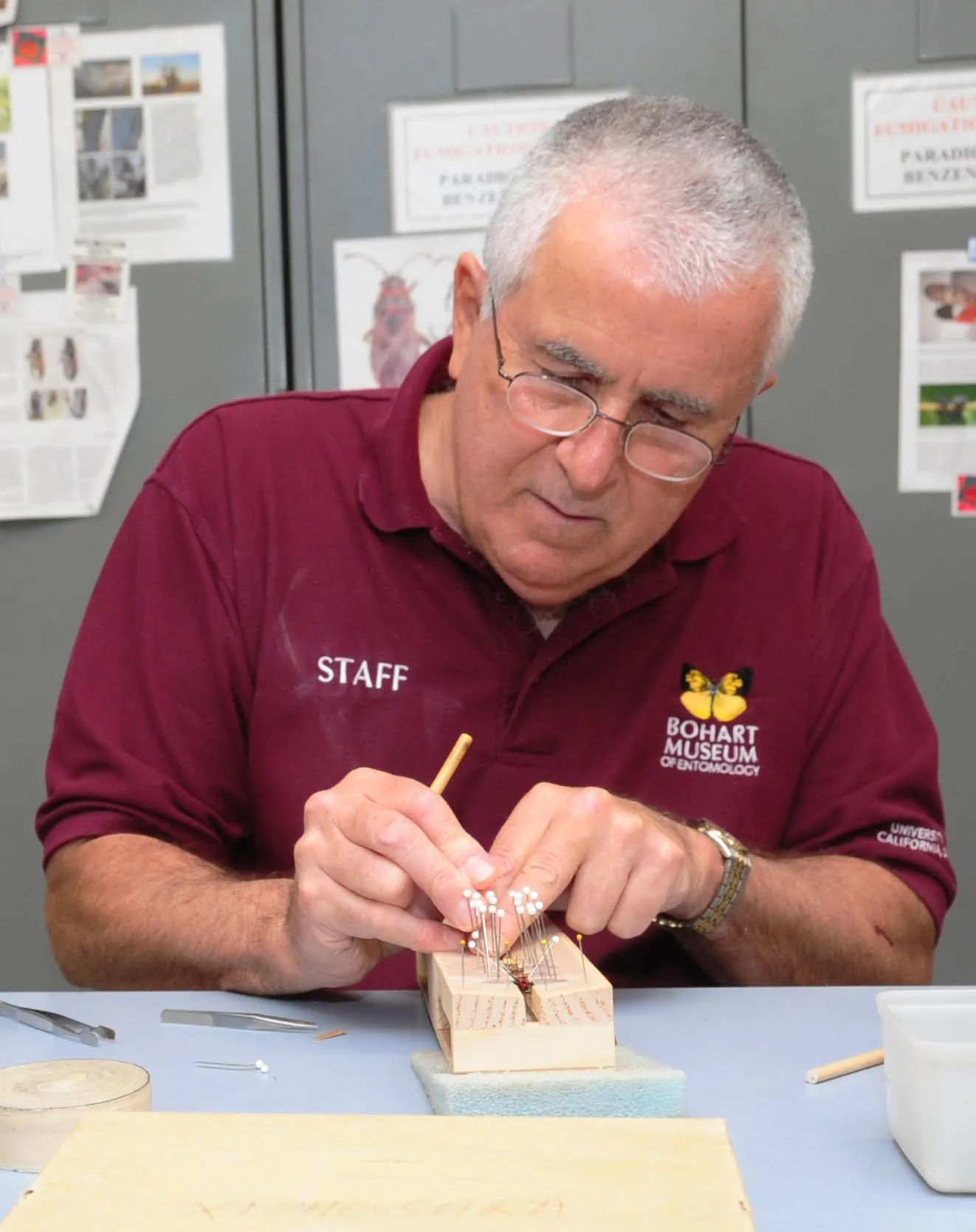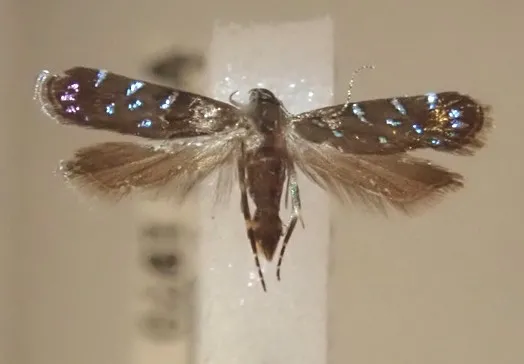How Tiny Is This Moth?

What a tiny moth!
Jeff Smith, volunteer curator of the Lepidoptera collection at the Bohart Museum of Entomology at the University of California, Davis, for three decades, has just spread the wings of a micro-moth with a wingspan (both wings open) measured at about 1 centimeter.
And it is not only tiny, but stunning. It is iridescent.
"It's a lovely micro-moth from Missouri that my wife says has 'bling' on it," Smith said.
Over the last few months, he's been "spreading the many thousands of field-pinned micros we have, and now and then some nice surprises show up."

This one is Strobisia iridipenella, the "Iridescent Strobisia" found throughout the southeast quarter of the United States.
"Gorgeous little moth," Smith says.
"It was collected WAY back in 1970 by F. D. Parker, and we have a great amount of moth material from him from Missouri in that year"
The moth belongs to the family Gelechiidae. Described by James Brackenridge Clemens in 1860, it is found in North America, where it has been recorded from New York to Florida, west to Texas and Illinois, south to Mexico.
How many Lepidoptera wings has Smith spread over his three decades at the Bohart Museum? More than 200,000 specimens (moths and butterflies), averaging 6,000 to 7,000 a year. His biggest moths are the Atlas Moths from eastern Asia and the biggest butterflies, the Birdwings from Malaysia.
Lately, he's been working on moths from Mexico, Panama, Chihuahua, and the Grand Cayman. "I've been spreading great numbers from Veracruz, Mexico, from Panama from Lynn and Bob Kimsey's time there, and of course, from Chihuahua from Terry Sears. We also have a lot from Grand Cayman. Some of the specimens are the tiniest species, and I'm generally successful in spreading just one side of the wings up to at least expose the surfaces."
"Lynn" is UC Davis Distinguished Professor Lynn Kimsey of the Department of Entomology and Entomology (ENT). She directed the Bohart Museum of Entomology for 34 years until her retirement on Feb. 1, 2024. Although retired, she continues her research on her specialty, Hymenoptera, and continues to write and edit the Bohart Museum newsletter that she founded. Husband Bob Kimsey is a forensic entomologist who retired as a UC Davis ENT lecturer in June, 2024.
The Gold Standard. The Bohart Museum is considered one of the top insect museums in the world. Professor Paul Opler (1938-2023) of Colorado State University, an international authority on butterflies and moths, heaped praise on the Lepidoptera collection after a visit: “I consider the Bohart Lepidoptera collection to be The Gold Standard to which we all should aspire.”
For his outstanding public service, Smith received the UC Davis College of Agricultural and Environmental Sciences' Friend of the College Award in 2015.
The Bohart Museum, founded in 1946 by UC Davis professor Richard "Doc" Bohart, today houses a global collection of eight million insect specimens. Located in Room 1124 of the Academic Surge Building, 455 Crocker Lane, UC Davis, the Bohart is directed by UC Davis Professor Jason Bond, the Evert and Marion Schlinger Endowed Chair of Systematics, UC Davis ENT, and executive associate dean, UC Davis College of Agricultural and Environmental Sciences.
For more information on the Bohart Museum, access the website or contact bmuseum@ucdavis.edu.
